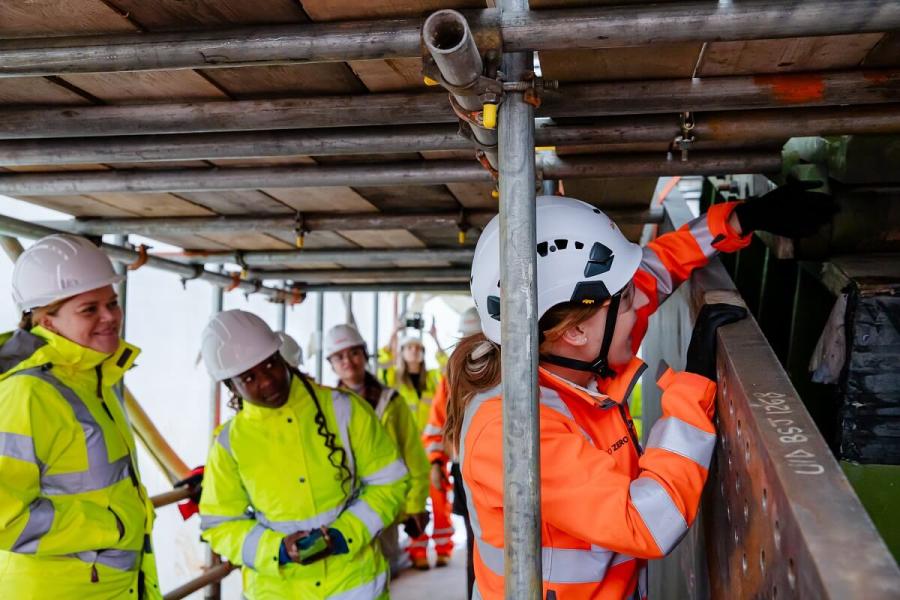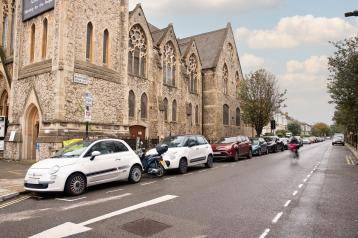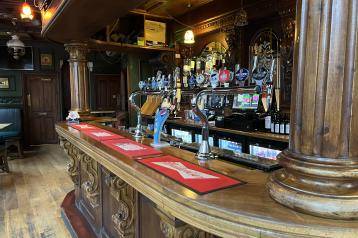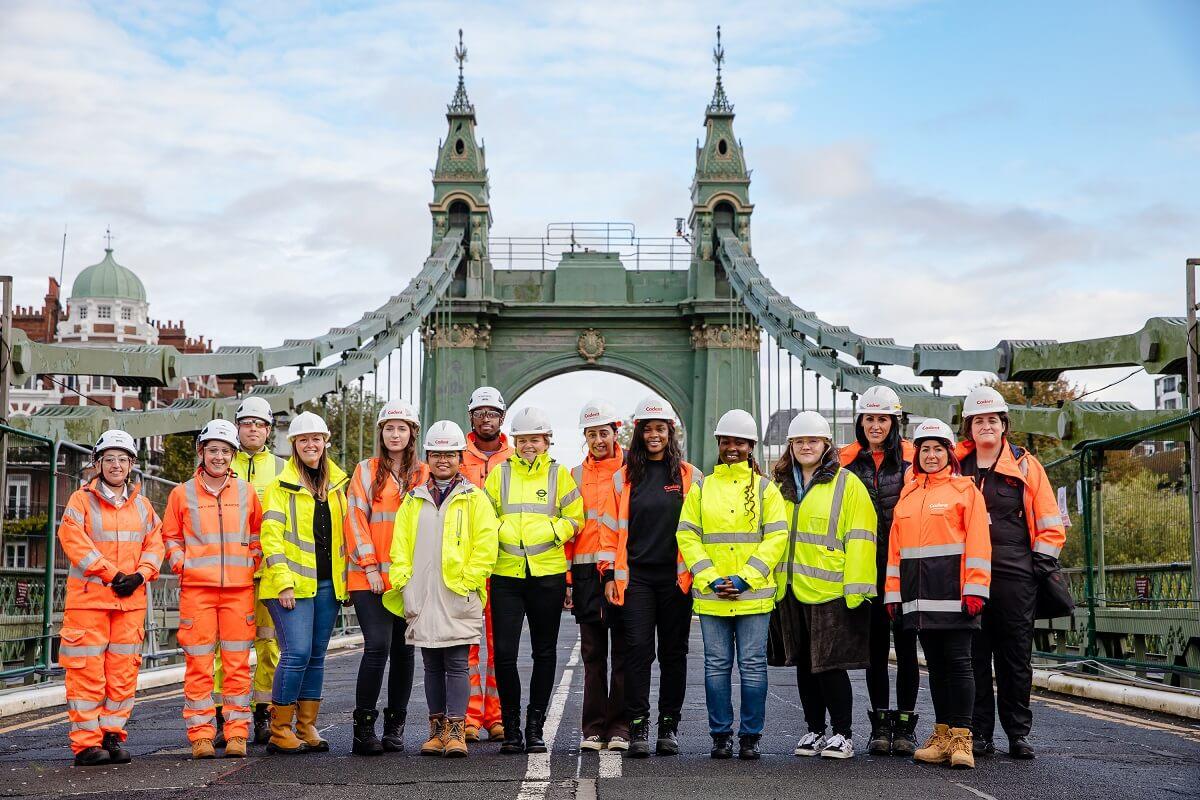
Women engineers gathered on Hammersmith Bridge recently to discuss the challenges of the project and the engineering industry.
Built in 1887, Hammersmith Bridge is one of the world's oldest suspension bridges. It is a Grade II* listed structure made of wood and wrought iron with the suspension held in place by cast iron pedestals. It is part of Britain's engineering heritage and a national landmark.
The group of engineers – which includes members from Transport for London, Cadent Gas and Barnet Council – took a behind-the-scenes tour and presentation from Arcadis, the project manager overseeing the Hammersmith Bridge stabilisation works.
The recent visit from the London Women in Engineering Group (LoWEG) was just part of Hammersmith & Fulham Council's efforts to encourage women and girls to pursue science, technology, engineering, maths, medicine and media (STEMMM) careers.
The Women's Engineering Society reports that only 16.5 per cent of all engineers in the UK are women.
Watch the video of their visit to our 136-year-old bridge on Wednesday (25 October)
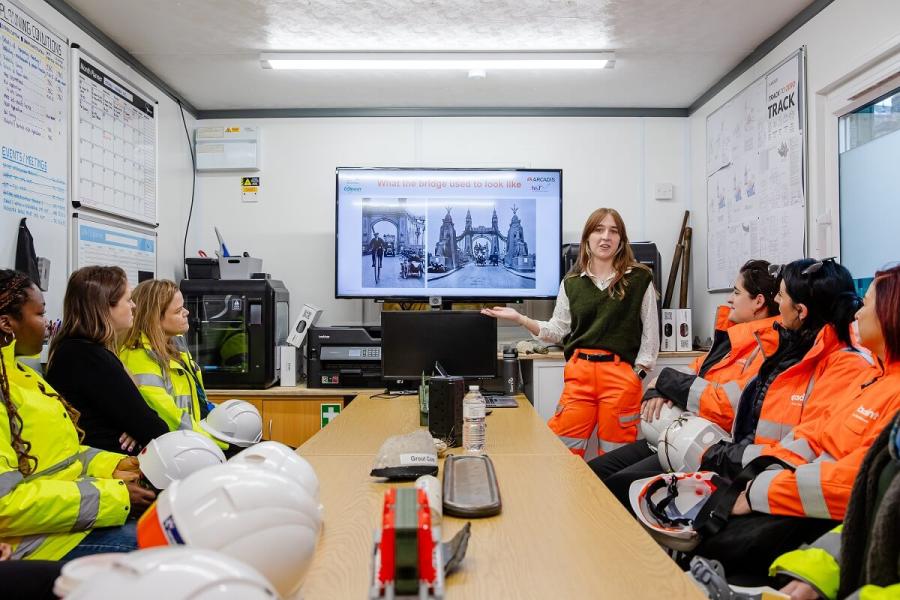
Cllr Sharon Holder, H&F Cabinet Member for Public Realm, commented: "We are making our borough stronger by supporting women working in engineering and other STEMMM fields.
"Seeing the pioneering work of women on our historic bridge helps pave the way and inspire the next generation."
Read all about how our Hammersmith Bridge specialists have been using the bridge as a valuable teaching tool:
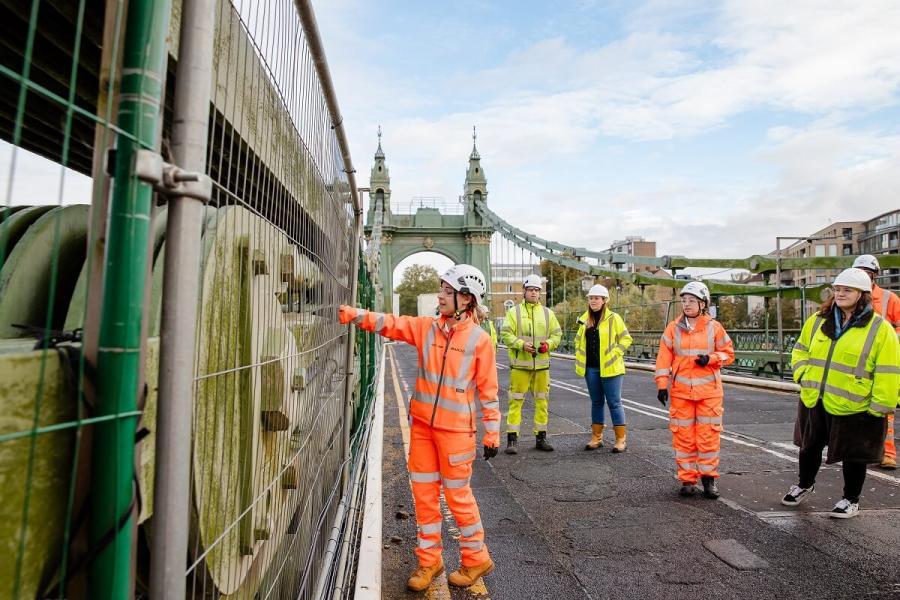
Inspiring the next generation
This education programme is a vital part of H&F's pioneering Industrial Strategy. We're giving our residents the inspiration, education and training they need to benefit from the new jobs and career opportunities coming to H&F.
Camille Anderson, lead supervisor for Arcadis, explained the pioneering work to stabilise the microfractures in the cast iron pedestals which bear the bridge's weight.
While Sansel Karabulut also from Arcadis described the inspections of the bridge's 200-year-old pier foundations.
Then the engineers headed out to the site to look at the works, including those within the four pedestals which carry the chains through the saddles.
"We got to see all of the inner workings of the pedestals – it was fascinating," said Donna Kelly, co-founder of LoWEG and a civil engineer at H&F Council.
"We set up LoWEG because we recognise that there aren't many female engineers and we wanted to create a space for women to network, to learn and to support each other."
Gloria Adebayo, from Cadent Gas, who also co-founded LoWEG, said: "I thought it was really exciting… to see the work that's going on because it is quite hidden."
Find out more about the restoration of Hammersmith Bridge.
